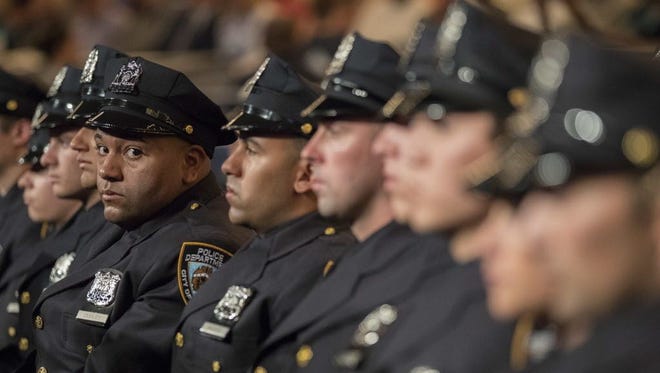Adopt uniform police use-of-force policies
Officers are too rarely charged, convicted in a system that is set up for them to win: Our view

In the span of a week last month, three former police officers tried for killing black men avoided punishment.
The circumstances in each case were different. But one thing was the same: the standard juries must use to evaluate an officer’s use of deadly force, requiring only that his actions were “objectively reasonable” at the time. This poorly defined standard, outlined by the Supreme Court in 1989, makes it nearly impossible to convict a police defendant, and recent trials have borne that out.
On June 16, Jeronimo Yanez was acquitted in the shooting death of Philando Castile, the Minnesota man killed moments after he was pulled over for a broken taillight. On June 21, Dominique Heaggan-Brown was found not guilty after fatally shooting Sylville Smith during a foot chase in Milwaukee. Two days later, jurors declared a mistrial for the second time in the prosecution of Ray Tensing, who fatally shot Sam DuBose after pulling him over for a missing front license plate near the University of Cincinnati.
POLICING THE USA: A look at race, justice, media
Death-by-cop is a term that has become all too familiar in this country. As of June 30, nearly 600 people were killed this year at the hands of police. That number is on pace to surpass the average number of police killings per year since 2005, about 1,000.
Policing is inherently dangerous, and some of these killings may be in self-defense. But the number of officers charged with trigger-happy behavior is implausibly low. Since 2005, just 80 officers have been arrested for fatal on-duty shootings and only 28 were convicted.
No federal law governs the use of force by police, so states are free to set their own standards. According to a study by Amnesty International, none requires that officers must attempt non-violent measures first leaving lethal force only as a last resort. Or that lethal force be used only when an officer is facing an imminent threat of death or serious injury.
As of June 2015, nine states and Washington, D.C., had no laws on the use of lethal force by officers. Among the 41 states that have statutes governing the use of lethal force, many are vague and rely on officers (some of whom may have a history of poor judgment) to decide whether using force is "reasonable."
Opposing view
Reasonable force isn’t perfect force
To avoid conviction and jail time, it seems, all an officer needs to say is that he feared for his life.
Tighter standards are needed and they exist in a few places. The Las Vegas Metropolitan Police Department’s use-of-force policy, for instance, has been successful in making officers more accountable. The department’s use-of-force directive tells officers to value the sanctity of life and states that officers must be in "imminent jeopardy" and feel "immediate threat" before using deadly force.
The policy is making a difference. The department’s officer-involved shootings dropped by nearly 40% from 2015 to 2016.
The Philadelphia Police Department's cop-involved shootings dropped by nearly 50% between 2013 (when then Police Commissioner Charles Ramsey requested a Justice Department review of the force) and 2015. Shootings have remained low since 2015, when the DOJ released its report and made tougher use-of-force and training recommendations. That year the department opened a new training center and started a reality-based program that puts officers in high-stress scenarios requiring fast judgment. Officers are encouraged to de-escalate situations and are also given training on how to do that.
Widespread adoption of Vegas-style standards would help assure that officers do not use lethal force cavalierly, and that when they do, they are investigated, tried and punished. The safety of the public — and particularly black men, who made up 6% of the population but 40% of the unarmed people shot and killed by police in 2015 — depends on it.
Setting and enforcing a national standard won't be easy at the 18,000 police agencies in the United States. But a minimum standard that ensures the safety of all Americans isn’t too much to ask. The Justice Department could develop a model standard and use grant money as an inducement for states and localities to adopt it.
Until the nation can do better than condoning the use of lethal force when an officer feels afraid, police will seldom be held accountable even for unjustified shootings, and Americans, particularly black Americans, will have a hard time trusting law enforcement.
USA TODAY's editorial opinions are decided by its Editorial Board, separate from the news staff. Most editorials are coupled with an opposing view — a unique USA TODAY feature.
To read more editorials, go to the Opinion front page or sign up for the daily Opinion email newsletter. To respond to this editorial, submit a comment toletters@usatoday.com.